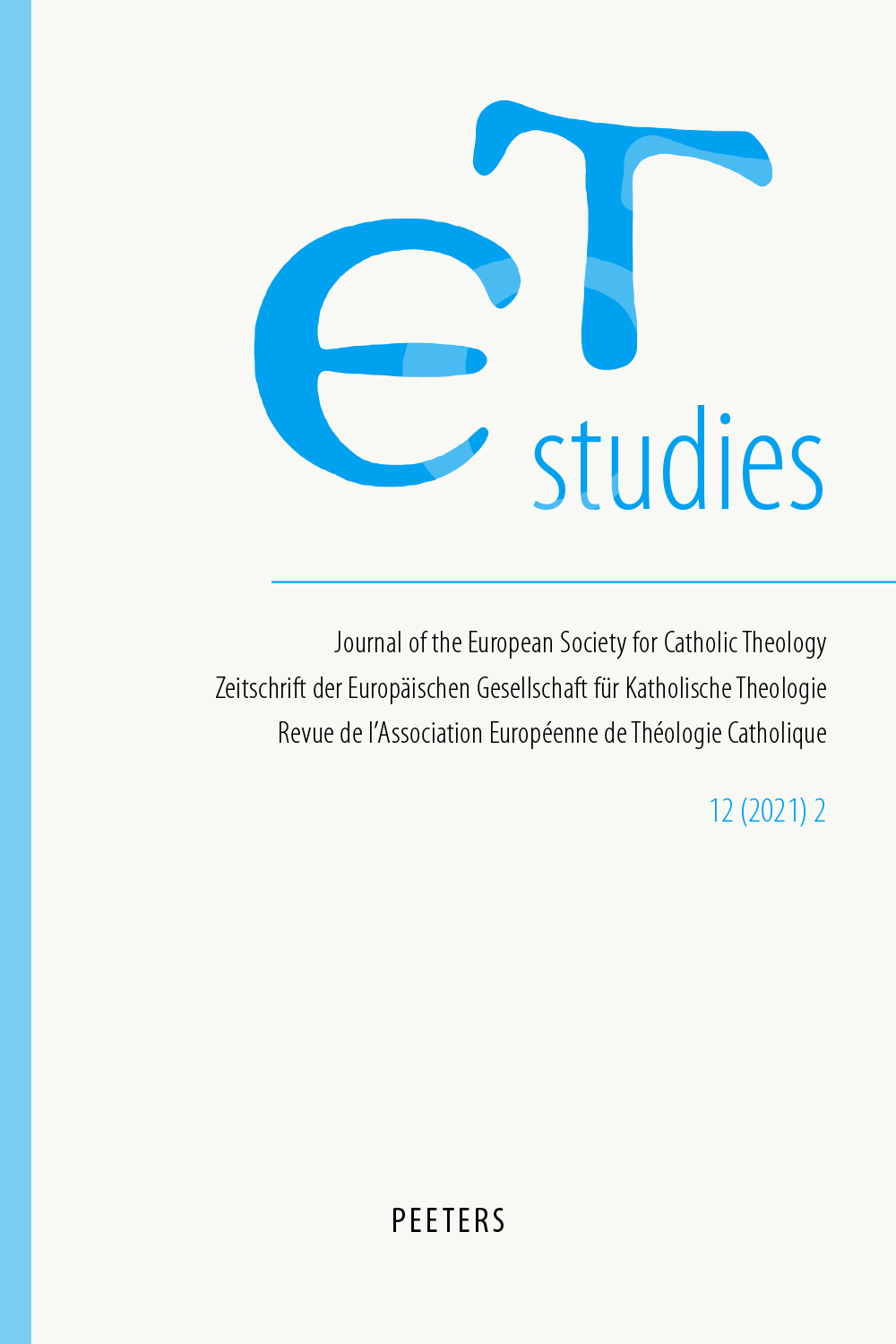 previous article in this issue previous article in this issue | next article in this issue  |

|
Document Details : Title: 'Out of All Nations they shall Bring All your Brethren' Subtitle: The Rise of Brotherhood in the Bible Author(s): VAN WIERINGEN, Archibald Journal: ET-Studies Volume: 10 Issue: 1 Date: 2019 Pages: 109-124 DOI: 10.2143/ETS.10.1.3286041 Abstract : In biblical texts, brotherhood is always connected to life in the Promised Land. If the positive relation between brothers is lost, death looms. Genesis conveys this message by using groups of brothers within the in-group. All these groups (Cain and Abel; Shem, Ham, and Japheth; Abraham and Lot; Jacob and Esau; Joseph and his brothers) consist of relations which are complicated and full of tension. New Testament texts continue the problematic aspects of brotherhood, as can be seen in Matthews and Acts, describing the relations between Jesus’ disciples and the relation within the ekklesia. In prophetic texts, however, the idea of brotherhood is also used to describe the relation towards the nations. Especially Isaiah makes clear that the Lord’s salvation for his people has become accessible to the world of the nations as well. New Testament texts, as in Matthews and Acts, too, continue this theological idea towards the nations. Nevertheless, the ideal brotherhood is still ‘work in progress’. The realization of brotherhood is beyond the texts of both the Old and New Testament. In biblischen Texten ist Geschwisterlichkeit immer mit dem Leben im verheißenen Land verbunden. Wenn die positive Beziehung zwischen Brüdern verloren geht, droht der Tod. Genesis vermittelt diese Botschaft, indem sie Brüdergruppen innerhalb der Eigengruppe thematisiert. Alle diese Gruppen (Kain und Abel; Shem, Ham und Japheth; Abraham und Lot; Jakob und Esau; Joseph und seine Brüder) sind durch Beziehungen gekennzeichnet, die kompliziert und spannungsgeladen sind. Wie man bei Matthäus und der Apostelgeschichte sehen kann, führen die neutestamentlichen Texte, in denen die Beziehungen zwischen den Jüngern Jesu und die Beziehung innerhalb der Kirche (Ekklesia) beschrieben werden, die problematischen Aspekte der Geschwisterlichkeit weiter fort. In prophetischen Texten indes wird die Idee der Geschwisterlichkeit verwendet, um das Verhältnis zu den Völkern zu beschreiben. Besonders Jesaja macht deutlich, dass die Erlösung des Herrn für sein Volk auch für die Welt der Völker zugänglich geworden ist. Texte des Neuen Testaments, wie bei Matthäus und die Apostelgeschichte, setzen diese theologische Idee in Bezug auf die Völker fort. Dennoch ist ideale Geschwisterlichkeit immer noch 'work in progress'. Die Verwirklichung von Geschwisterlichkeit geht über die Texte des Alten wie des Neuen Testaments hinaus. Dans les textes bibliques, la fraternité est toujours liée à la vie dans la terre promise. Si la relation entre frères se perd, la mort s’annonce. La Genèse transmet ce message par le biais de groupes de frères à l’intérieur du groupe. Tous ces groupes (Caïn et Abel, Shem, Ham et Japhet, Abraham et Lot; Jacob et Esaü, Joseph et ses frères), sont faits de relations compliquées et sont pleines de tensions. Les aspects problématiques de la fraternité sont repris dans les textes du Nouveau Testament, comme on peut le voir chez Matthieu et dans les Actes où sont décrites les relations entre les disciples de Jésus et la relation au sein de l’ekklesia. Cependant, dans les textes prophétiques, l’idée de fraternité est également utilisée pour décrire la relation avec les nations. Isaïe, en particulier, fait valoir que le salut accordé par le Seigneur à son peuple est désormais également accessible au monde païen. Les textes du Nouveau Testament, eux aussi, comme Matthieu et les Actes, reprennent cette idée théologique concernant les nations. Néanmoins, l’idéal de fraternité est toujours un «travail en cours». La concrétisation de la fraternité va au-delà et de l’Ancien et du Nouveau Testament. |
 |
